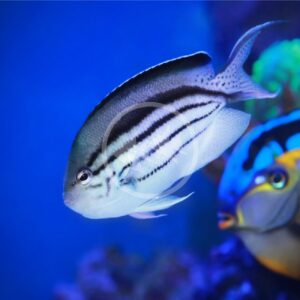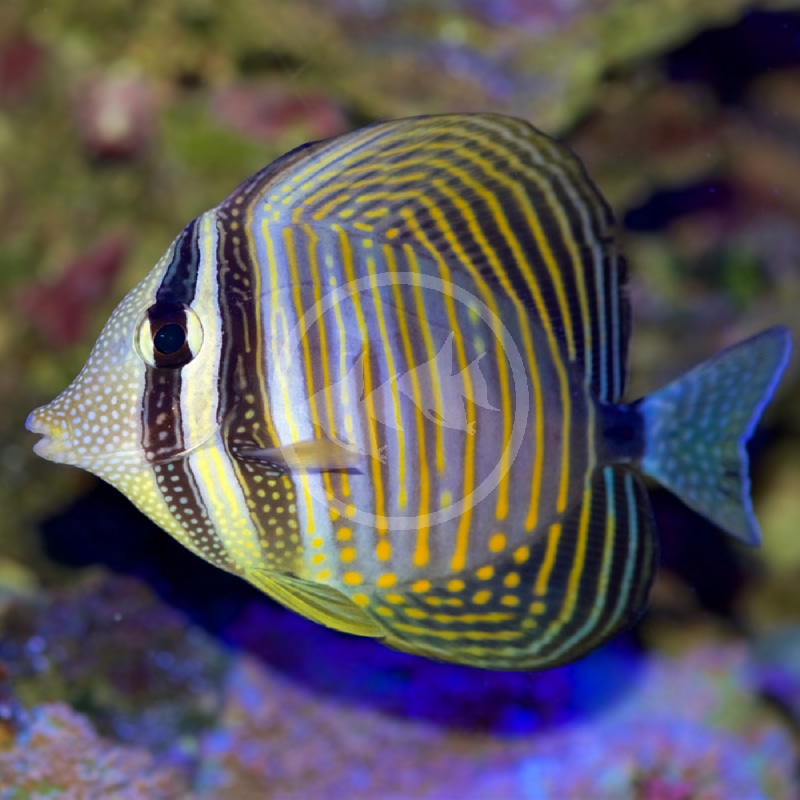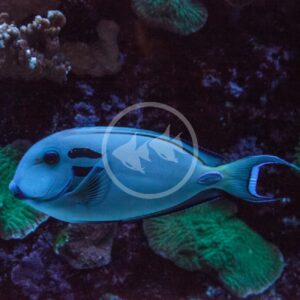
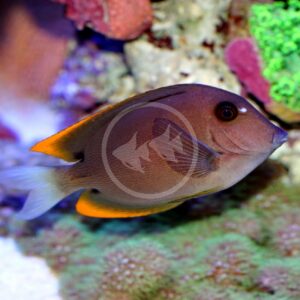
TANG – SAILFIN DESJARDINII Zebrasoma desjardinii
$169.99 – $199.99
The Desjardinii Sailfin Tang, also known as the Indian Ocean Sailfin Tang or Red Sea Sailfin Tang, are native to waters around Africa, the Maldives, and Sri Lanka. Most similar to the Sailfin Tang (Zebrasoma veliferum), but differs greatly in the adundance of freckles on its face and abdomen, and the maze of yellow stripes along its body, anal and dorsal fins that become more defined with age. The tail of the Desjardinii sailfin tang is typically blue-grey in color with white freckles, a characteristic that also separates it from the Sailfin tang. Markings and spots in juvenile Desjardinii sailfin tangs will not be nearly as abundant or defined. This tang is very active and relatively hardy once acclimated, making it suitable for large fish-only and reef aquariums. An adult Desjardinii sailfin tang can reach a size of approximately 15″, and can appear to double in size when their dorsal and anal fins are completely extended open.
Care Level: Moderate
Temperament: Semi-Aggressive
Reef Compatible: Yes
General Description: The Desjardinii Sailfin Tang, also known as the Indian Ocean Sailfin Tang or Red Sea Sailfin Tang, are native to waters around Africa, the Maldives, and Sri Lanka. Most similar to the Sailfin Tang (Zebrasoma veliferum), but differs greatly in the adundance of freckles on its face and abdomen, and the maze of yellow stripes along its body, anal and dorsal fins that become more defined with age. The tail of the Desjardinii sailfin tang is typically blue-grey in color with white freckles, a characteristic that also separates it from the Sailfin tang. Markings and spots in juvenile Desjardinii sailfin tangs will not be nearly as abundant or defined. This tang is very active and relatively hardy once acclimated, making it suitable for large fish-only and reef aquariums. An adult Desjardinii sailfin tang can reach a size of approximately 15″, and can appear to double in size when their dorsal and anal fins are completely extended open.
Diet Requirements: In the wild tangs are primarily herbivorous. A diet largely consisting of algae-based foods is absolutely necessary to maintain optimal health, coloration, immune function, and reduce aggression. If not, tangs often develop head and lateral line erosion from such deficiencies. Vegetable based flake foods or frozen foods, that may also include spirulina algae, are excellent options. We also recommend offering dried seaweed on a rock or clip three times a week minimum. Desjardinii sailfin tangs will consume various other protein-based frozen foods.
Care Requirements: An established minimum 125 gallon aquarium with 18+ inch width is required for turning around. Smaller specimens can be temporarily raised in smaller quarters (no less than 75 gallons) as long as it is upgraded accordingly. This tang enjoys a variety of rock work and crevices to take refuge, but also should be provided with open swimming space. Desjardinii sailfin tangs are often sought after to add to a reef aquarium for not only their beautiful appearance, but their natural tendency to graze upon algae build up. Typically, Zebrasoma species are semi-aggressive and territorial in nature. If you are looking to avoid potential rough-housing with other tank-mates, it can help to introduce this fish near last or last. Additionally, Zebrasoma often conflict with conspecifics (including other species within the genus). If you want to house various types of tangs together, it is best to add them all at once, or closely together at the very least, for the best success. Recommended water conditions, 72-78° F, KH 8-12, pH 8.1-8.4, salinity 1.020-1.025.
Purchase Size: Small: 1-1/4″ to 2-1/4″; Medium: 2-1/2″ to 3-1/2″; Large: 3-3/4″ to 5-1/2″
Note: Your item may not look identical to the image provided due to variation within species. Purchase sizes are approximate.
Dry goods orders are shipped via US Postal Service or UPS to the address provided at checkout based on the selection made in your website shopping cart. Product is carefully packed to help prevent any damage during shipping. Once processed you will receive a shipment notification via email with tracking number, and delivery notification. Please allow 48 hours for processing after your order is placed.
Perishable items (i.e. live plants, refrigerated/frozen foods) are shipped via US Postal Service 2-3 day to the address provided at checkout for a $25.00 flat rate charge. Items are packed with secure packing material and heat, cold, or Cryo packs as needed to maintain safe temperatures during transit. If one or more perishable items are in the shopping cart at checkout the $25.00 perishable shipping charge will automatically appear and need to be selected. Once processed you will receive a shipment notification via email with tracking number. Please allow 48 hours for processing after your order is placed.
Livestock (i.e. fish, invertebrates, coral) are shipped via UPS Overnight to the address provided at checkout for a $55.00 flat rate charge. Livestock is packed in insulated styrofoam boxes with secure packing material and heat, cold, or Cryo packs as needed to maintain safe temperatures during transit. If one or more livestock items are in the shopping cart at checkout the $55.00 livestock shipping charge will automatically appear and need to be selected. Livestock is shipped Monday through Wednesday ONLY (no weekend delivery is available) weather permitting, and we reserve the right to delay shipping until conditions are appropriate for safe arrival. Once your order is placed we will contact you to arrange the best shipping date based on these criteria. Someone must be available to receive the livestock order on the first delivery attempt. Once processed you will receive a shipment notification via email with tracking number. Please allow 48 hours for processing after your order is placed.
For mixed dry goods/perishable & livestock orders items will be shipped via their corresponding shipping methods outlined above. Dry goods will be shipped via US Postal Service or UPS based on your selection and checkout, while livestock will ship via UPS Overnight for a $55.00 flat rate charge. You will receive separate notifications and tracking numbers for the dry goods and livestock. Please note due to different carriers and shipping methods dry goods and livestock may arrive on different days.
Related products


PUFFER – BLUE SPOT Canthigaster solandri
$89.99 – $149.99HAWK – LONGNOSE Oxycirrhites typus
$129.99 – $159.99

BLENNY – MIDAS GOLDEN Ecsenius midas
$99.99 – $129.99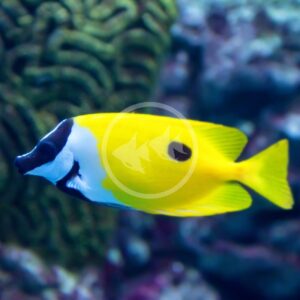

RABBITFISH – ONE SPOT FOXFACE Siganus unimaculatus
$119.99 – $169.99

ANGEL – KORAN Pomacanthus semicirculatus
$89.99 – $199.99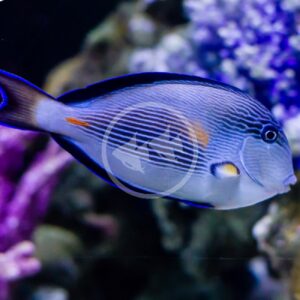

TANG – SOHAL Acanthurus sohal
$289.99 – $319.99

RABBITFISH – TWO BARRED Siganus virgatus
$89.99 – $199.99